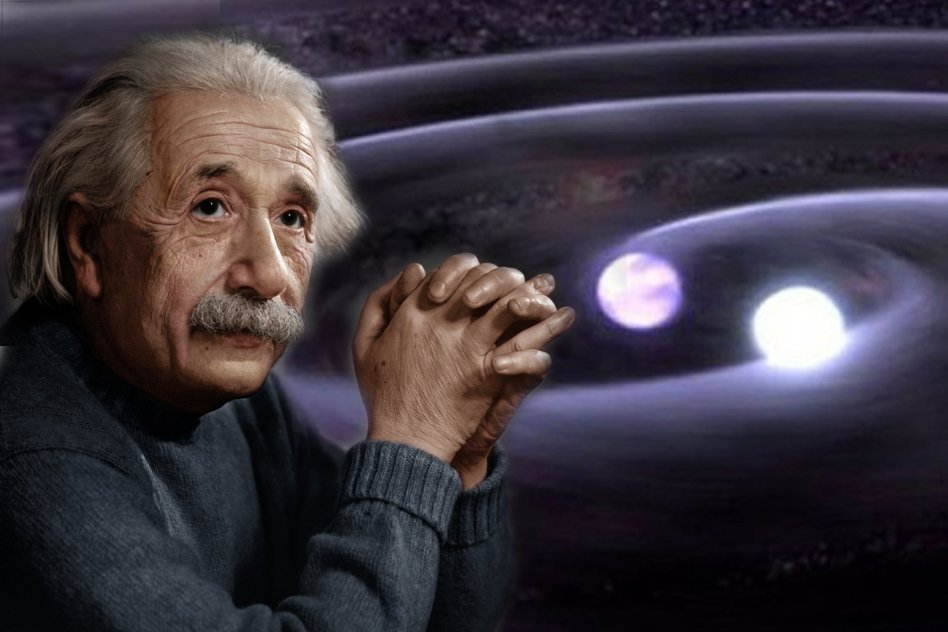Image Source: theingeniousproject | theweek
In one of the most anticipated press conferences ever, scientists behind the massive LIGO project announced the first ever detection of gravitational waves. This discovery confirms a major prediction of Einstein’s General Theory of Relativity (1915), exactly a century after they were first predicted by Albert Einstein.
Gravitational waves are ripples in space-time generated by interactions of strongly gravitating objects like black-holes. These ripples are extremely small in magnitude – so small that scientists three decades ago believed we could never detect them. And that’s what makes the discovery exhilarating – for the first time ever, we have reached a scale of experimental accuracy that is way beyond our imagination!
The Logical Indian attempts to explain the concept of gravitational waves and the significance of the discovery.
1. What is LIGO?
The Laser Interferometer Gravitational-Wave Observatory (LIGO) is a large scale collaboration between scientists of MIT, Caltech and other institutions. Founded in 1992, the project’s main aim is to detect gravitational waves, which were believed to be undetectable. Nearly 1000 scientists worldwide are working for the project. The two detectors are located at Hanford and Livingstone, USA.
2. How are gravitational waves produced?
Gravitational waves are produced when a binary black-hole system (two black-holes rotating about each other) collapses and merges into one single black-hole, thereby releasing an enormous amount of energy in the form of ripples in space-time. This energy is estimated to be about 50 times the energy of all the stars in the universe combined!
In this case, such a black-hole merging took place about 1.3 billion years ago at a location 1.3 billion light-years away, and its gravitational waves were detected on earth at 5:51 am (US Eastern) on September 14, 2015.
3. How do the waves manifest themselves on the earth?
Gravitational waves travel at the speed of light and distort space-time on their path. The effect would be such that the length between two objects on earth would vary with time whenever a wave is passing through them. But these variations are so small, it is impossible to directly measure them even with the most accurate measuring techniques.
4. How did LIGO detect the waves?
The LIGO observatory has two arms, each 4 km long, and the entire setup is used as an interferometer. The setup has multiple mirrors which form two distinct paths for the same laser light, each along one arm.
Whenever a gravitational wave passes through earth, it compresses one arm and expands the other. This change results in an additional phase difference in the two laser paths, and hence the laser lights interfere differently in the end, causing a detectable change in the interference pattern. In short, the change in length of paths of lasers due to gravitational waves is exploited to detect the waves.
5. How accurate is the experiment?
Here comes the technological marvel. Gravitational waves cause a distortion of the order of 10¯²¹. This means, even for a 4 km long observatory, distortions would be of the order of 10-18 meters, which is about one-billionth of the size of an atom! Two decades of research and technological advancement led to an incredible amount of precision in measurements, and consequently, the undetectable was detected!
6. What is the significance of the discovery?
Firstly, let’s take a moment to pride ourselves on the unimaginable level of precision mankind has achieved. This discovery reiterates the fact that we can achieve marvels through science and technology.
Secondly, this discovery might have opened a new avenue for space exploration. Our primary tool for exploring the universe is observation through telescopes that rely only on light waves reaching us from outer space. But objects like black-hole and dark matter do not emit light and there is no easy way to detect them. However, they can interact via gravity, and gravitational waves might be the only agent which carries their information to us. Though the current technology is not adequate to make large-scale detections using gravitational waves, this might be a first step to unveiling a brand new technique of observing the unobserved part of universe. In short, it is the beginning of a new sense organ for space exploration!
Lastly, the discovery almost confirms Einstein’s General Relativity beyond doubt. This will help in developing further research in several theoretical fields such as Quantum Gravity and unification of the fundamental forces.
Good news for India!
LIGO and the Indian Initiative in Gravitational Observations (IndIGO) have proposed a collaborative project to create a world-class gravitational-wave detector in India. The project, titled LIGO-India, has been presented to the Department of Atomic Energy and the Department of Science and Technology for approval and funding, but final approval has not been granted yet. If approved, this project would mark a giant leap in India’s research in Observational Astronomy.
The Logical Indian congratulates the scientists and staff at the LIGO collaboration for their path-breaking discovery. This is undoubtedly the most important scientific discovery since that of the Higgs Boson in 2013. Quoting France Cordova, director of the National Science Foundation, “Einstein would be beaming right now, wouldn’t he?”











